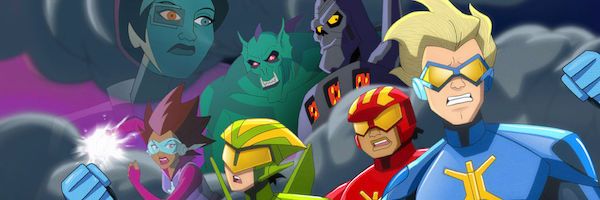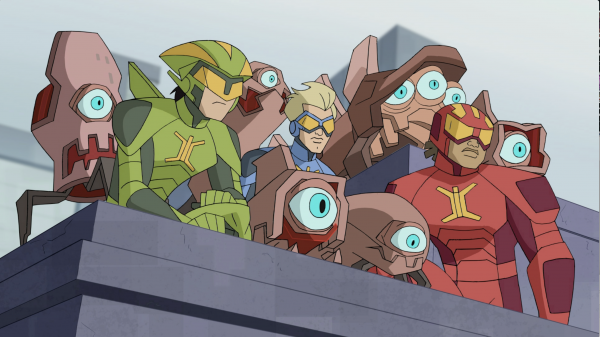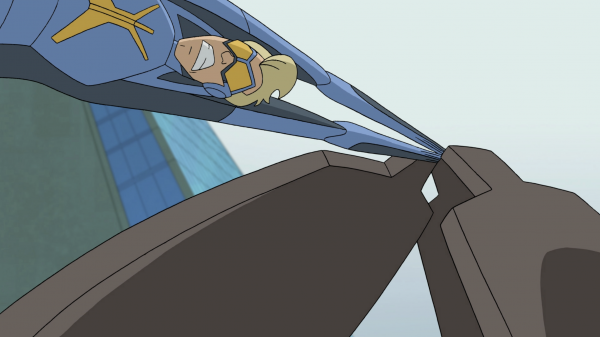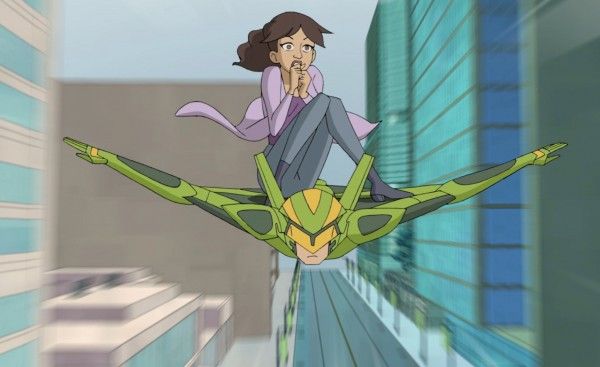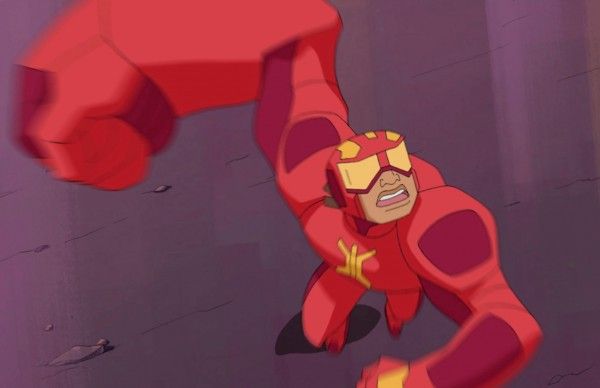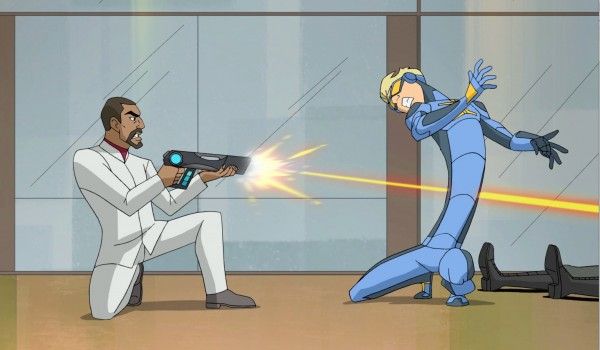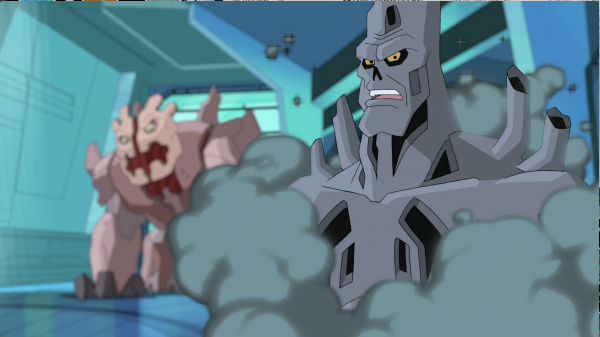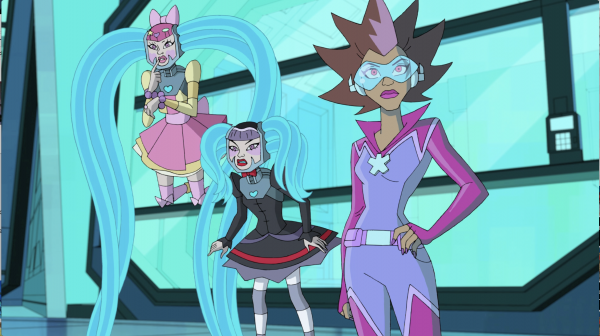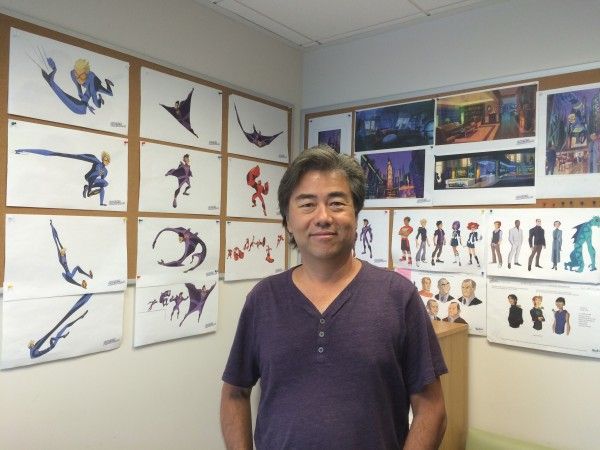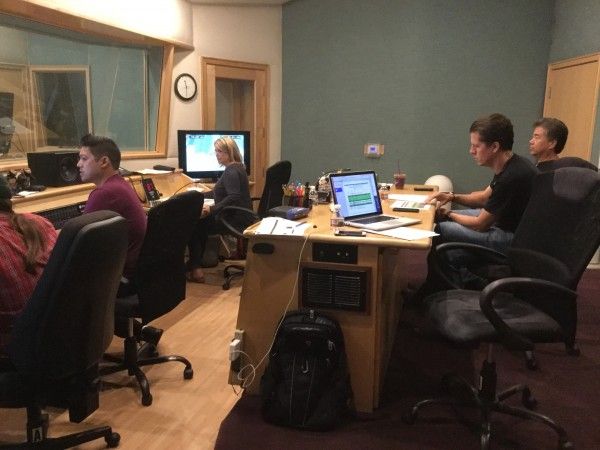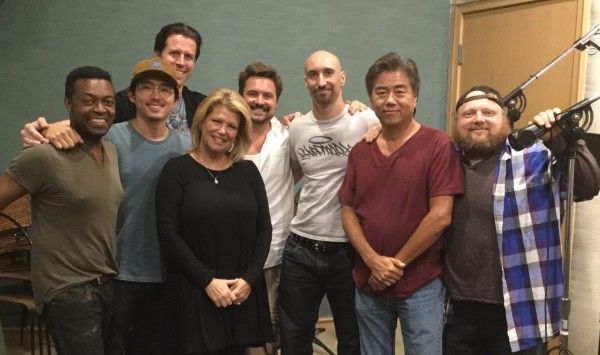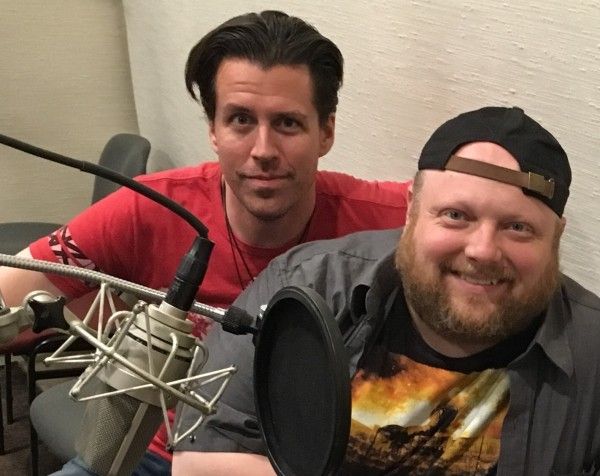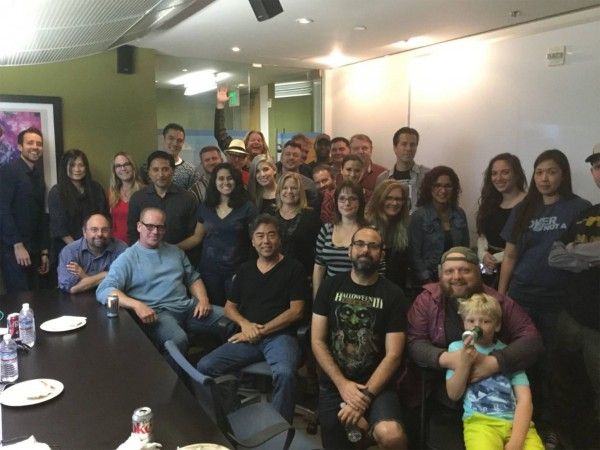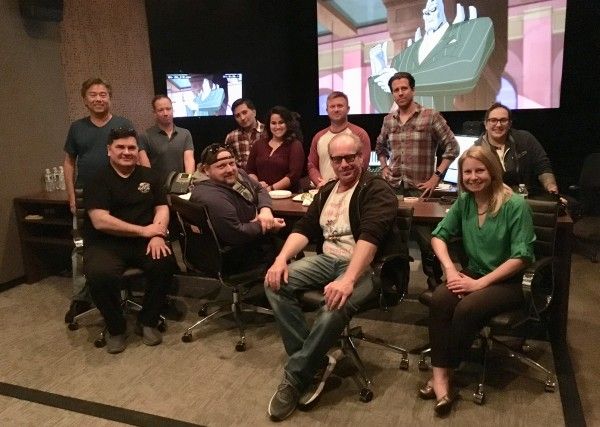If you haven't watched the entirety of Netflix's first season of Stretch Armstrong and the Flex Fighters, do yourself a favor and get caught up before you venture any further here. If you don't, not only would you be missing out on an original, entertaining, and very different sort of superhero show, but you'd be spoiling some storytelling surprises that factor into the series' interactive episode, Stretch Armstrong: The Breakout. This awesome addition to the show directly follows the events of Season 1, but it packs way more story into its runtime than your average special thanks to Netflix's interactive ability that lets you choose the path!
To find out just what it takes to develop an interactive tale like The Breakout, I spoke with series executive producer/director Victor Cook and show/comic book writers Kevin Burke and Chris "Doc" Wyatt for behind-the-scenes details on this innovative and original episode. If you're curious as to where the story of The Breakout fits into the overall narrative, whether it's canon or not, and just how many storytelling options there are, this is a can't-miss interview. However, this is also your last spoiler warning if you aren't caught up yet!
With Stretch Armstrong's interactive episode, "The Breakout"... is this canon to the series itself or is it a one-off adventure?
Victor Cook: Yes, this is canon, it is not a one-off. The interactive episode is part of the overall story that starts in Season 1 and continues to Season 2.
Are ALL the possible story options also canon or is there one "right" one? Do they contradict each other at all?
Cook: All option outcomes are canon. There are two different fates for one of the characters depending what you choose, but the aftermath of either still connects to Season 2.
How many possible story paths are there?
Cook: Over 40.
How much actual footage is there in the overall piece?
Cook: We used three episodes worth of footage, 66 minutes to produce the interactive episode, but the longest story path is 44 minutes. We needed the extra footage to create the alternate choices.
"The Breakout" has so many options and outcomes that it feels like a mini-season instead of a special episode. What was different about making this one vs the regular season episodes?
Cook: From a directing point of view, this was quite a production challenge to piece it all together. Because some of the paths had similar parts, it felt like working on the movie Groundhog Day. Figuring out who was going to storyboard and animate which section was like figuring out how to get a Rubik's Cube's colors to line up!
Basically, myself and each sequence director, Kevin Altieri, Alan Caldwell, and Frank Paur handled an environment and villain. For example, one would oversee all the Smoke Stack disco scenes, another all the Circuit Stream arcade scenes, another the Rook Tower scenes, another the Multifarious construction site scenes etc. We also assigned the storyboard artists similarly, this helped each sequence hook up.
The music score had to be done a little bit differently for the interactive than a regular episode. We couldn’t start music right at the start of a sequence and it could not go completely to the end of a sequence. Our composers, The Outfit, did it in a way that sounded great!
Usually, a normal episode allows me the freedom to spot the color schemes in at least a couple varying times: day, sunset, evening etc. so I can direct a visual progression of mood. In a regular episode, a script might describe a sequence as day, but sometimes I will go off script and direct the city to be sunset or evening. The interactive had to take place all in one day, and I really needed to stay on script for this. I decided to make it overcast to reflect the gloominess of The Flex Fighters' situation. Only two of the endings made sense for me to direct the city to be sunset and night. So to create mood through out the rest of the episode, we focused on how each interior environment would be lit and colored; those were implemented so well thanks to Art Director Joey Mason and Background Painters Tristan Roesch and Kelly Chan.
The interactive was a bit of a challenge to record because it wasn’t as sequential as a regular episode and couldn’t be done in one day. Voice Director Collette Sunderman did an amazing job tracking the needs of each sequence while guiding the actors. Scott Menville, Ogie Banks, Steven Yeun, Nazneen Contractor, Kate Mulgrew, Keith David, Wil Wheaton and the other actors were up for the challenge and delivered stellar performances.
There were technical aspects with the choice points we never had on a regular episode that Netflix worked closely with us to make work.
Another thing different from a regular episode is we decided to not start the interactive with the main title sequence. It felt too upbeat considering how season one ended. But we did create an extra long END credit sequence. We actually start the END credits with our main title sequence that features an important visual cast change-up. The rest of the end credits feature multiple images of a lot of new cool art from the show with a medley of many of the show’s music themes. I encourage everyone to watch the end credits.
The script, of course, was super long. Kudos to Doc Wyatt and Kevin Burke for writing this! They had strings on the wall connecting all the option paths to make sure each worked from a story point of view and each would connect from season one to season two, no matter what path was chosen, no matter which ending they led to.
Was the interactive episode always part of your storytelling plan from the beginning?
Chris “Doc” Wyatt: It was Netflix who pitched us on the idea of doing an interactive special, and we jumped on it as soon as they mentioned it. We were excited by the creative challenges and possibilities.
Kevin Burke: Originally we had talked about doing a long-form special between the seasons, and Netflix suggested, based on the technology they were developing, that we make it interactive. As fans of the old “Choose Your Own Adventure” books, we immediately were inspired by the things we could do in this new format. This was something new and exciting and Doc and I, and Vic, are always looking for new challenges.
Were the story elements in the interactive episode things that you wanted to explore during the regular season but just didn't have a place for them?
Burke: The interactive special isn’t its own stand-alone thing, it’s part of the overall Stretch Armstrong and the Flex Fighters storyline, so you really have to watch Season One to really appreciate where you are story-wise when the interactive special begins. And the results of the special lead directly into the events of Season Two.
Wyatt: The story elements introduced in the interactive were always going to be part of the story of the show, but the interactive allowed us to introduce them in an interesting new way.
As writers, did you feel a sense of freedom with being able to use all of your story ideas rather than being forced to pick just one path?
Burke: Definitely. As complicated as writing something like this was--the script was as thick as a phone book with all the possible storylines--there was a real freedom in that we didn’t have to throw away any ideas. If we had a number of possible set-pieces or storylines, they all got to go up on the board to see if we could make them all work. So in a lot of ways, we got to use everything we pitched for this story.
Do you have a favorite path or outcome?
Wyatt: I do... But I'm not going to say what it is. I don't want to influence anyone else's experience. Everyone should have their own favorite outcome.
Burke: Agreed. And I’m not sure I could pick a single path that is my favorite. I love certain scenes, I love certain sequences, but I really love the idea that you get to decide how the story works. So in that way, I love everything we threw in there. It’s been very interesting to see which stories fans have preferred.
Cook: For my taste in story, I do have a favorite path and outcome. But that is just my personal choice. The cool thing about the interactive is that any path and outcome is valid and any choice the viewer makes is a great story path.
However, as an artist, the following are some of my favorite sequences in terms of animation.
- Smoke Stack’s fight with the Flex Fighters in the disco.
- The fight sequence at Rook Tower featuring Multifarious, Kane, The Delta team and The Flex Fighters.
- BlindStrike vs Stretch Monster.
- Circuit Stream in the Arcade.
- Quick Charge at the Power plant.
- The Flex Fighters vs a villain duo featured in one of our many endings.
- Rooks final scene in two of the endings.
I am proud of the entire interactive and the hard work the whole crew put into it. Joonki Park, Chris Rutkowski, Sofia Alexander, Jae Kim, Adam Van Wyk, Alan Lau, Brad Rau, Brandon McKinney and all the storyboard artists did a fantastic job staging it, and choregraphing the action.
What was the trickiest path to navigate, storywise?
Wyatt: The final battle in the path where you chase all the villains was a real challenge, because on certain paths you've caught some of them already, so we had to keep track of which villains were still free, on the streets, and available for everyone to fight in the end. It required different versions of the final battle, depending on how you navigated those parts of the story path. It was a challenge, but it really came together in the end.
Which path has the longest story or the most footage?
Cook: I don’t want to give that away in case some readers haven’t interacted with the Interactive Episode yet, but I have heard some devices didn’t have choice points and played a 44 minute version.
Any hopes, plans, or ideas for another interactive episode in the future?
Burke: TONS of hopes, plans, and ideas!
Wyatt: We loved doing the interactive and we would JUMP at the chance if we could do another one!
Cook: If Netflix asks, we’d love to make another.
The first season of Stretch Armstrong and the Flex Fighters is available on Netflix now, as is the interactive episode, The Breakout.
Since so many people work on both the main series and the interactive episode, here's a chance to meet some of them by checking out these behind-the-scenes images from the production:

